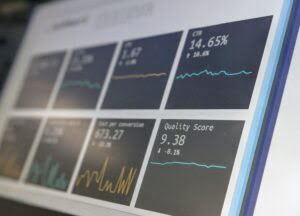Introduction
In mathematics, categories play a fundamental role in organizing and studying various mathematical structures. They provide a framework for understanding relationships between objects and morphisms. This essay will define the category Cat, examine the idea of functors, and examine categories in general.
Definition of Categories
A category consists of objects and morphisms, where the objects represent mathematical entities, and the morphisms represent relationships between these entities. To be a category, the following conditions must be satisfied:
- For every object A, there exists an identity morphism idA that maps A to itself.
- For any two morphisms f and g, such that the target of f is the source of g, there exists a composition morphism g ∘ f that maps the source of f to the target of g.
- Composition of morphisms is associative, meaning that for any three morphisms f, g, and h, (h ∘ g) ∘ f = h ∘ (g ∘ f).
Categories can be found in various branches of mathematics, including algebra, topology, and logic. They provide a common language to study and compare different mathematical structures.
Examples of Categories
Let’s consider a few examples to illustrate the concept of categories:
1. Set
The category Set consists of sets as objects and functions between sets as morphisms. The identity function is the identity morphism, and the typical function composition is called composition. Set is a fundamental category in which many mathematical structures can be studied.
2. Grp
The category Grp consists of groups as objects and group homomorphisms as morphisms. The identity morphism is the identity homomorphism, and composition is the composition of homomorphisms. Grp allows us to study the properties and relationships between different groups.
3. Top
The category Top consists of topological spaces as objects and continuous maps as morphisms. The identity morphism is the identity map, and composition is the composition of continuous maps. Top helps us understand the properties and behavior of topological spaces.
The Concept of Functors
A functor is a mapping between categories that preserves the structure and relationships between objects and morphisms. Formally, a functor F maps objects in one category to objects in another category and morphisms in one category to morphisms in another category. It must satisfy the following conditions:
- For every object A in the source category, there is an object F(A) in the target category.
- For any morphism f: A → B in the source category, there is a morphism F(f): F(A) → F(B) in the target category.
- Functors preserve identity morphisms and composition, meaning that F(idA) = idF(A) and F(g ∘ f) = F(g) ∘ F(f).
Functors allow us to relate different categories and study their similarities and differences. They provide a powerful tool for comparing mathematical structures and transferring knowledge between different areas of mathematics.
The Category Cat
The category Cat is a special category that consists of small categories as objects and functors between these categories as morphisms. The identity morphism is the identity functor, and composition is the composition of functors.
The category Cat is interesting because it allows us to study categories themselves as mathematical objects. By considering categories as objects and functors as morphisms, we can explore the relationships and properties of different categories.
Conclusion
Categories are a fundamental concept in mathematics, providing a framework for organizing and studying mathematical structures. Functors enable us to relate and compare different categories, while the category Cat allows us to study categories as mathematical objects themselves. Understanding these concepts is essential for exploring the interconnectedness of various mathematical fields and deepening our understanding of the underlying structure of mathematics.





















+ There are no comments
Add yours